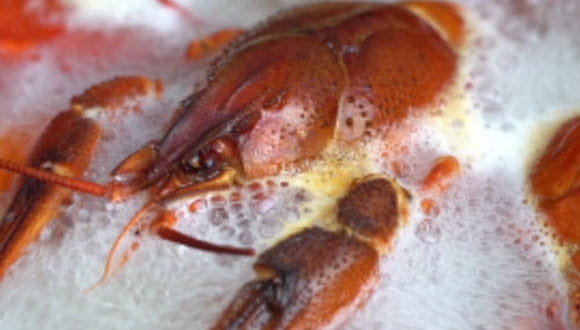Crawfish may look unsightly at first glance, but — when boiled and soaked in cajun spices and seasonings — they become a culinary staple of outdoor gatherings during the spring.
If you're no stranger to boiled crawfish, you already know what to expect. They're messy. They're delicious. They can be tricky to open. But are they healthy?
Angela Snyder, wellness dietitian at Houston Methodist, breaks down the nutritional value of crawfish, as well as how to have the healthiest crawfish boil ever.
Crawfish are a great source of lean protein
When it comes to whether or not a crawfish boil is healthy, the crawfish themselves certainly aren't the issue.
"A serving of crawfish, which is about three ounces of peeled crawfish tails, is a very low-calorie, low-fat source of protein," says Snyder.
Snyder says the health benefits of crawfish include that they're:
- Low calorie. A serving of crawfish is only 70 calories.
- Low fat. Not only are crawfish low in total fat, they're low in unhealthy fats.
- Protein dense. There are 14 grams of protein in a serving of crawfish.
Crawfish also contain a good amount of B vitamins, as well as iron and selenium — important minerals that can be hard to get through your diet.
"The only drawback to crawfish is that they do contain some dietary cholesterol," says Snyder. "But ultimately, crawfish are an overall healthy source of protein."
Crawfish boils: the good, the bad and the bloating
While crawfish are definitely the star of the boil, they're not the only thing you'll find when you sit down to eat.
"Traditionally, crawfish are boiled with potatoes, corn, onions and garlic. As long as you're staying within the serving size limits of each, these vegetables help make a crawfish boil a well-rounded meal," Snyder says. "You can even add more vegetables, like mushrooms, green beans and bell peppers, to make your boil even healthier."
Keep in mind, the recommended serving size of a potato is one medium boiled potato. Which brings us to the bad part of a crawfish boil: It can be very easy to overeat.
"We're used to relying on our plate to help us portion-size," Snyder says. "At a crawfish boil, all of the food is laid out on a table. This can make it really hard to judge portions, as well as stick to a healthy portion size."
Plus, if the crawfish boil is part of a social event, you're likely preoccupied by conversation and maybe even an alcoholic beverage (or two) — which can both make overeating easier.
And even if you manage to stay within a healthy serving size of both crawfish and boiled veggies, it's pretty much impossible to avoid the unhealthiest aspect of a crawfish boil: The excess (and we mean excess) salt.
The recommended daily intake of sodium is 2,400 mg or less. For people with high blood pressure or cardiovascular disease, it's even lower — about 1,500 mg or less. The seasoning bags and seasoning liquid used in a crawfish boil are extremely high in sodium. So much so that a person with high blood pressure almost hits his or her daily sodium intake in just a single serving of boiled crawfish and vegetables. (Related: What Happens If You Eat Too Much Salt?)
"Excess sodium makes you retain water," explains Snyder. "Not only does this cause that uncomfortable bloated feeling the next day, but it could place added stress on your blood vessels and your heart."
Snyder adds that it can take several days for your kidneys to flush out the extra sodium of a high-sodium meal. So be prepared to feel bloated for a day or two.
Tips for staying healthy at a crawfish boil
When it comes to making healthy choices at crawfish boil, while still enjoying yourself, Snyder recommends the following:
- Be mindful of your portion sizes
- Drink plenty of water (aka more water than usual)
- Limit your alcohol intake to one to two drinks
And, if you're the one preparing the boil, Snyder also recommends using low-sodium seasoning bags and adding extra healthy vegetables.








